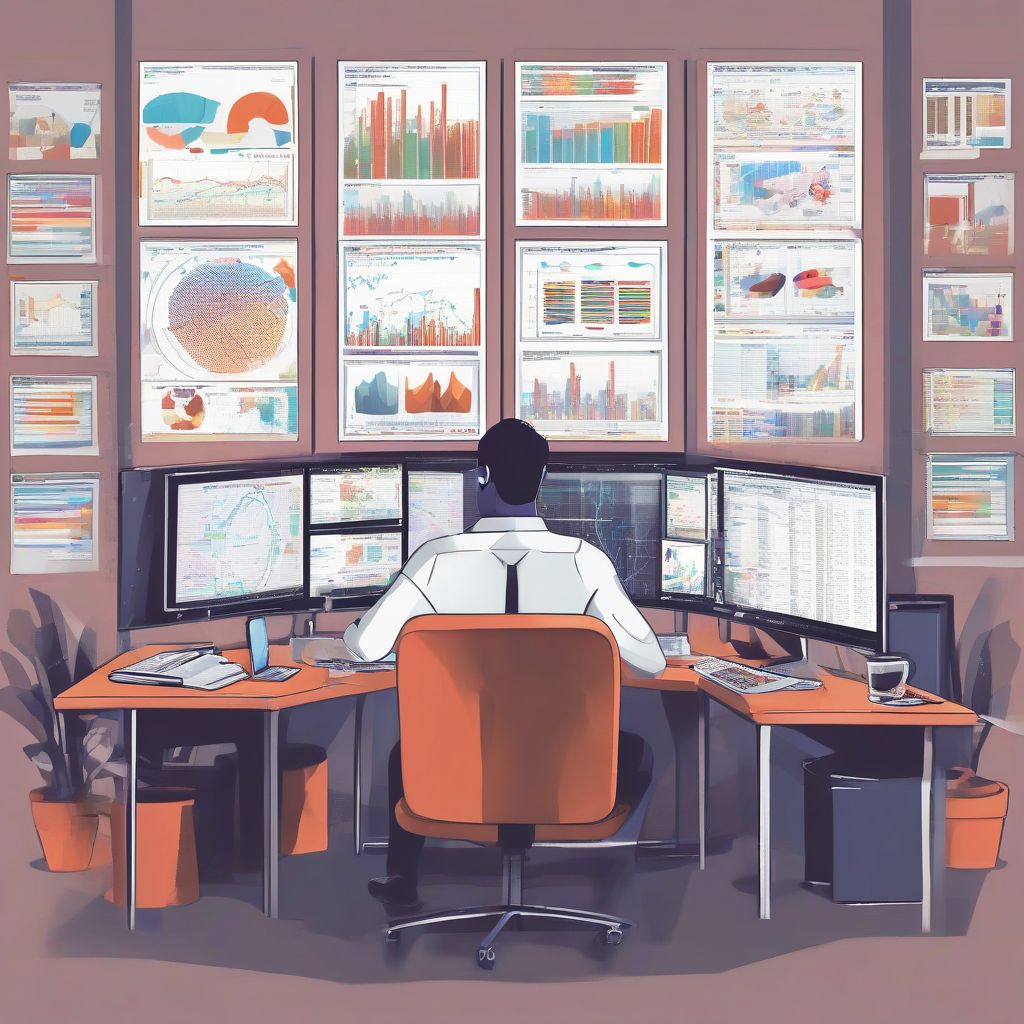The world is drowning in data, and businesses are scrambling to find individuals who can navigate this complex landscape. Enter the Data Scientist Analyst, a professional who bridges the gap between technical data analysis and strategic business insights. This article serves as your comprehensive guide to understanding the role of a data scientist analyst, exploring their responsibilities, required skills, and the significant impact they have on today’s data-driven world.
What is a Data Scientist Analyst?
A data scientist analyst is a multifaceted role that involves extracting meaningful insights from vast amounts of data. They employ a combination of statistical analysis, machine learning, data visualization, and domain expertise to identify trends, patterns, and opportunities hidden within data. More than just crunching numbers, data scientist analysts act as storytellers, translating complex data into actionable recommendations that drive business decisions.
Key Responsibilities of a Data Scientist Analyst:
- Data Collection and Cleaning: The journey begins with gathering data from various sources, which often requires cleaning and pre-processing to ensure accuracy and consistency.
- Exploratory Data Analysis: Employing statistical techniques and data visualization tools, they delve into the data, identifying patterns, outliers, and potential areas for further investigation.
- Model Building and Machine Learning: Data scientist analysts utilize machine learning algorithms to build predictive models, enabling businesses to anticipate future trends and outcomes.
- Data Storytelling and Visualization: Communicating findings effectively is crucial. They present their insights through compelling visuals and dashboards, making complex data accessible to stakeholders.
- Collaboration and Communication: Working closely with business stakeholders, they translate business problems into data-driven solutions and communicate their findings in a clear and concise manner.
taigamemienphi.me/wp-content/uploads/2024/08/datascientist-working-66c5a8.jpg" alt="Data Scientist at Work" width="1024" height="1024">Data Scientist at Work
Essential Skills for Success as a Data Scientist Analyst
Becoming a successful data scientist analyst requires a unique blend of technical skills and business acumen.
Technical Skills:
- Programming Languages: Proficiency in languages like Python or R is essential for data manipulation, analysis, and model building.
- Data Wrangling and Cleaning: Mastering techniques to clean, transform, and prepare data for analysis is crucial.
- Statistical Analysis: A strong foundation in statistics is fundamental for understanding data distributions, hypothesis testing, and drawing meaningful conclusions.
- Machine Learning: Familiarity with various machine learning algorithms, such as regression, classification, and clustering, is key to developing predictive models.
- Data Visualization Tools: Proficiency in tools like Tableau or Power BI enables the creation of compelling visuals to communicate insights effectively.
Soft Skills:
- Communication Skills: Clearly and concisely conveying complex data findings to both technical and non-technical audiences is essential.
- Problem-Solving Skills: The ability to break down complex business problems into solvable data-driven questions is crucial.
- Critical Thinking: Data scientist analysts must be able to critically evaluate data, identify biases, and draw accurate conclusions.
- Collaboration: Working effectively in teams and collaborating with stakeholders from different departments is essential.
The Impact of Data Scientist Analysts: Real-World Applications
The demand for data scientist analysts continues to skyrocket as organizations across industries recognize the transformative power of data-driven decision-making.
- Retail: Data scientist analysts personalize the customer experience by analyzing purchase history and recommending products based on individual preferences.
- Finance: Fraud detection algorithms, risk modeling, and algorithmic trading are just a few examples of how data science is revolutionizing the finance industry.
- Healthcare: Data analysis plays a critical role in disease prediction, personalized medicine, and optimizing hospital operations.
- Marketing: Data scientist analysts analyze customer behavior and market trends to optimize marketing campaigns, target specific audiences, and measure campaign effectiveness.
The Future of Data Science Analysis
The field of data science is constantly evolving, with new technologies and methodologies emerging rapidly. Staying ahead of the curve requires continuous learning and adaptation.
Emerging Trends:
- Artificial Intelligence (AI): AI-powered tools are automating tasks, enabling data scientist analysts to focus on more complex analysis and interpretation.
- Big Data Analytics: The rise of big data necessitates the use of advanced tools and techniques to handle massive datasets.
- Cloud Computing: Cloud-based platforms provide scalable and cost-effective solutions for storing, processing, and analyzing data.
Conclusion
The role of a data scientist analyst is not merely a job title; it’s a passport to the forefront of innovation. By wielding the power of data, these professionals are driving smarter decisions, optimizing processes, and shaping the future across industries. If you possess a blend of analytical prowess, technical skills, and a passion for uncovering hidden patterns, a career as a data scientist analyst might just be the perfect fit. As the world continues its rapid digitization, the demand for skilled data professionals will only intensify, making it an exciting and rewarding field to be a part of.
